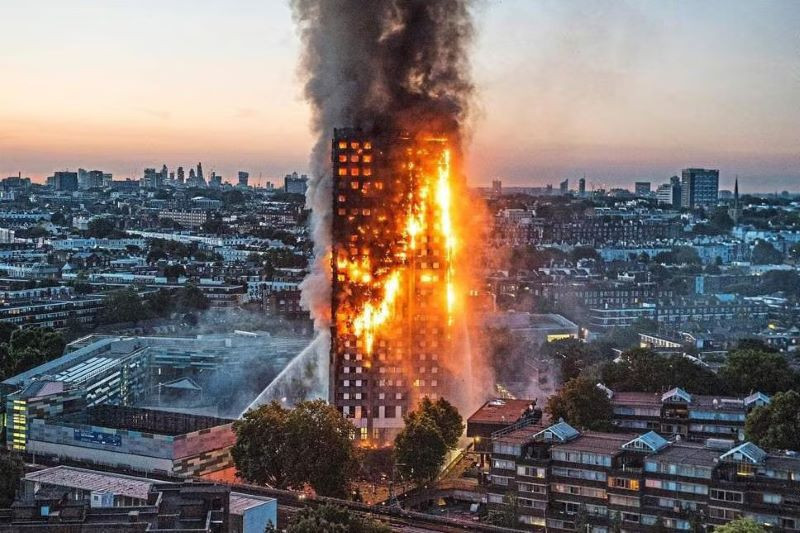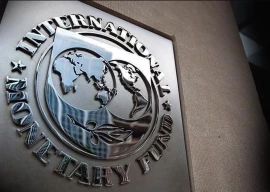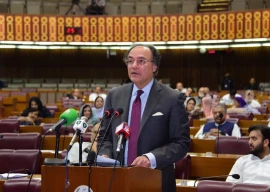
The UK’s Grenfell Tower fire disaster that killed 72 people was the result of “decades of failure” by government and construction industry bodies and the “systematic dishonesty” of building material firms, a final report said Wednesday.
Unveiling the damning findings of an independent probe into the 2017 tragedy, inquiry chair Martin Moore-Bick said the deaths were “all avoidable” and the victims had been “badly failed”.
Some of those who played a part in sowing the seeds of the disaster had shown “incompetence”, as well as “dishonesty and greed”, he said.
The fire in the early hours of June 14, 2017, spread rapidly through the 24-storey block in west London due to highly combustible cladding fixed to the exterior.
Starting in a faulty freezer on the fourth floor, the blaze took barely half an hour to climb to the building’s top floor with catastrophic consequences.
The report marks the end of the long-running inquiry into Britain’s worst residential fire since World War II.
It makes scathing criticism of successive governments and other influential bodies, as well as architects, over a refurbishment of Grenfell that led to the cladding and other dangerous materials being installed.
In particular, the report condemns firms involved in the supply of rainscreen cladding panels and other insulation products.
Accusing them of “systematic dishonesty”, it said they “engaged in deliberate and sustained strategies to manipulate the testing processes, misrepresent test data and mislead the market”.
‘Crooks and killers’
Following the release of the report Grenfell United, which represents some of the survivors and victims, called on government to act urgently.
“The government must now exert control over the sector to prevent further dismantling of public safety, which used to be their main job, not aiding and abetting crooks and killers.”
Prime Minister Keir Starmer pledged that his government would “carefully consider the report and its recommendations, to ensure that such a tragedy cannot occur again”.
“The country failed to discharge its most fundamental duty: to protect you and your loved ones… And I am deeply sorry,” Starmer said in a statement to parliament after a critical final report on the disaster was released.
London Mayor Sadiq Khan said the Grenfell residents had “paid a price for systemic dishonesty, corporate greed, and institutional indifference and neglect”.
The London Fire Brigade (LFB) also comes in for heavy criticism with senior officers described as “complacent”.
The service failed to ensure that the danger posed by the increasing use of cladding “was shared with the wider organisation and reflected in training”, it said.
It also failed to learn the lessons of a previous fire in 2009 which “should have alerted the LFB to the shortcomings in its ability to fight fires in high-rise buildings”.
Residents who phoned the emergency services were told to remain in their flats and await rescue for nearly two hours after the fire broke out.
Men, women, and children, including whole family groups, were trapped in their own homes and perished. That “stay-put” advice, now considered to have cost lives, has since been revised.
The tragedy’s youngest victims were a stillborn child and a six-month-old baby, Leena Belkadi, found with her mother in a stairwell between the 19th and 20th floors.
Dangerous buildings
The disaster has left many people living in buildings covered in similar cladding fearful of a similar tragedy.
Those who owned their own homes also faced financial problems as their apartments became unsaleable.
In 2022, the then-Conservative government announced that developers would be required to contribute more to the cost of the removal, with residents in buildings over 11 metres high not having to pay at all.
But a fire in Dagenham, east London, just over a week ago illustrated the ongoing risks.
More than 80 people had to be evacuated in the middle of the night after waking to smoke and flames in a block where work to remove “non-compliant” cladding was only partially completed.
London fire commissioner Andy Roe said there were still around 1,300 buildings in London alone where urgent “remediation” work still needed to be done.
Criminal charges?
Grenfell United said it now expected police and prosecutors to “ensure that those who are truly responsible are held to account”.
London’s Metropolitan Police, however, has said its investigators will need until the end of 2025 to finalise its own investigation.
And the Crown Prosecution Service said after the report’s release that decisions on potential criminal prosecutions were not expected for another two years.
Citing the “sheer volume of evidence and complexity of the investigation, the CPS’s Frank Ferguson said a team of specialist prosecutors would not be “in a position to make any charging decisions until the end of 2026”.
For former Grenfell Tower resident Edward Daffarn, however, a delay that long is unacceptable.
“We are not prepared to wait for much longer, and this report needs to be the catalyst for significant movement forward from the Met Police in bringing charges against people who perpetrated the deaths of 72 people,” he said earlier.













1725434334-0/Untitled-design-(35)1725434334-0-270x192.webp)









COMMENTS
Comments are moderated and generally will be posted if they are on-topic and not abusive.
For more information, please see our Comments FAQ